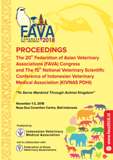PAT-2 Rapid Diagnostic Test of Red Sea Bream Iridoviral Disease (RSIVD) in Grouper Epinephelus sp. Based on Serological Co-Agglutination and Molecular Study
Abstract
Red sea bream iridoviral disease (RSIVD) is caused by red sea bream iridovirus (RSIV), a
double stranded DNA of Icosahedral virus with a diameter of 120-240 nm [1]. RSIV is one of the species of the Megalocytivirus, Genus of the Iridoviridae Family, first reported to infect red sea bream (Pagrus major) fish, at Sikoku Island, Japan 1991, and since then it has been noted to cause considerable economic losses to fisheries in Singapore, Taiwan, Thailand, Korea, Philippines, Malaysia and also in Indonesia [2,3,4]. Rapid transmission with high mortality rates in fish populations infected becomes a serious threat to the aquaculture fishery business. Stained imprints or tissue sections [1], monoclonal antibody technique (MAb), Immunofluorescent Antibody Tests (IFAT) [5], Polymerase Chain Reaction (PCR) [6] Electron Microscope and Multiplex PCR [2] methods have been introduced. Although it is very effective for detecting RSIVD in infected fish, but requires training and specialized equipment at a high cost.
Co-agglutination test is a diagnostic method, used both in humans and animals in detecting bacterial or viral diseases [7], this method is fast, easy to use, and does not require special equipment. Test results from co-agglutination are easily seen macroscopically, so it is suitable if developed in RSIVD detection in the field case. This study aims to create and conduct RSIVD co-agglutination kit field tests supported by molecular studies and diagnostic analysis of the sensitivity and specificity of the accuracy and reliability of the kit. Then the test results will be compared from the pooling and individual samples.

